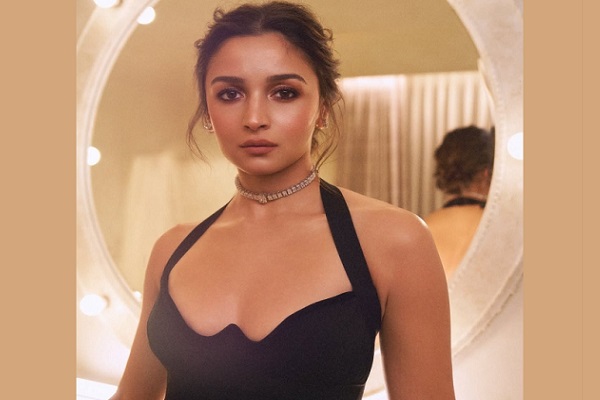The Role of Gender Fluidity in Fashion: Breaking Boundaries and Embracing Identity

Fashion has long been a reflection of societal norms and cultural movements. Over the years, it has evolved to represent not just trends but also individual identities and expressions. One of the most exciting and transformative shifts in recent years has been the rise of gender fluidity in fashion, where clothing is no longer confined to traditional gender norms. This movement is about more than just fashion; it’s about personal freedom, inclusivity, and embracing diversity.
Breaking Down Gender Norms in Fashion
Historically, fashion has been deeply rooted in binary gender distinctions—men's clothing and women's clothing—each with its own set of expectations. Men were expected to wear suits, trousers, and structured garments, while women wore dresses, skirts, and more form-fitting clothing. However, over time, these rigid boundaries have begun to blur, especially in the last decade. The concept of gender fluidity in fashion challenges the idea that clothing must adhere to one of two gendered categories.
Gender-fluid fashion is not about designing clothes for a specific gender but instead creating garments that anyone, regardless of their gender identity, can wear comfortably. This includes unisex clothing, which has become increasingly popular, offering a more neutral option that transcends traditional gender categories.
The fashion industry has embraced this shift, with numerous designers and brands showcasing collections that blur gender lines. Collections feature a mix of traditionally masculine and feminine elements, such as oversized shirts with skirts, tailored suits with dresses, and accessories that cater to all genders. The result is a wardrobe that encourages self-expression and allows individuals to choose pieces based on their personal style, not their gender.
Prominent Figures Leading the Charge
The role of gender fluidity in fashion has been championed by both designers and public figures. One notable example is Harry Styles, who has consistently used fashion to break gender norms. His choice to wear a dress on the cover of Vogue magazine was a landmark moment in the conversation about gender fluidity in fashion. Styles’ fashion choices have not only challenged traditional gender expectations but have also sparked a larger conversation about the freedom of expression and inclusivity in fashion.
Other celebrities, such as Billy Porter and Janelle Monáe, have also been pivotal in promoting gender-fluid fashion, with bold red carpet choices that defy conventional gendered clothing. These figures serve as role models, showing that fashion is an expression of individuality and can transcend societal boundaries.
The Influence of Gender Fluidity on Fashion Designers and Brands
As society becomes more open to diverse gender identities, designers and brands are increasingly catering to a broader audience. Fashion houses like Gucci, Prada, and Balenciaga have embraced gender-neutral and androgynous collections, showing that high fashion can be inclusive. These designers understand that fashion is about more than just clothing; it’s about telling stories, empowering individuals, and challenging norms.
Smaller, independent brands have also played a key role in promoting gender fluidity. Labels like Telfar, Loewe, and Céline have crafted collections that defy traditional gender categories, using neutral colors, versatile silhouettes, and non-binary designs. These brands are not just responding to a trend; they are part of a larger cultural shift toward embracing gender diversity.
Even fast-fashion brands have started to adapt to the changing landscape. Many are launching gender-neutral clothing lines that appeal to a wide audience, from casual wear to formal attire. These collections focus on comfort, fit, and design, offering versatile options that anyone can wear without feeling restricted by gendered labels.
Impact of Social Media and Digital Platforms
The rise of social media has played a crucial role in the growth of gender-fluid fashion. Platforms like Instagram, TikTok, and YouTube provide a space for individuals to showcase their personal style and challenge traditional gender norms. Gender-fluid influencers and content creators have used these platforms to highlight inclusive fashion, empowering others to express themselves without fear of judgment.
Digital spaces allow people to explore fashion in new ways, whether through virtual fashion shows or online communities where like-minded individuals can share ideas and styles. The visibility of gender-fluid fashion has only grown thanks to the internet, as more people are able to access a wide range of clothing options and find inspiration from diverse voices.
The Future of Gender Fluidity in Fashion
The future of gender fluidity in fashion looks incredibly promising. As society continues to evolve, fashion will undoubtedly continue to move toward greater inclusivity and acceptance. We can expect to see even more brands and designers embracing gender-neutral collections, reflecting a broader cultural shift toward embracing diversity in all its forms.
Fashion is no longer about conforming to outdated standards; it is about celebrating individuality and personal expression. As gender fluidity becomes more prominent in fashion, we are seeing the emergence of a new era where clothes are a reflection of who we are, rather than a label of who we’re supposed to be.
Conclusion: Fashion as an Expression of Freedom
The rise of gender fluidity in fashion is a powerful testament to how far the industry has come in terms of inclusivity and self-expression. It challenges the restrictive ideas of gender and celebrates the freedom to wear what feels right, without the constraints of societal expectations. As more people embrace this movement, fashion will continue to be a tool for empowerment and a canvas for personal identity.
In this new world of fashion, the boundaries are endless, and so are the possibilities for self-expression. The future of fashion is fluid, inclusive, and exciting, offering everyone the opportunity to embrace their authentic selves.
























